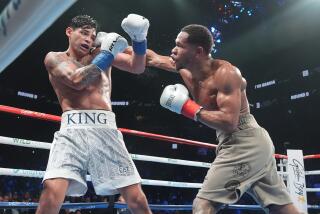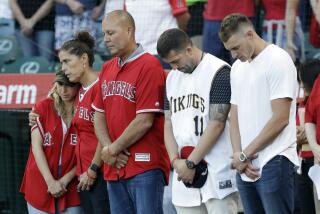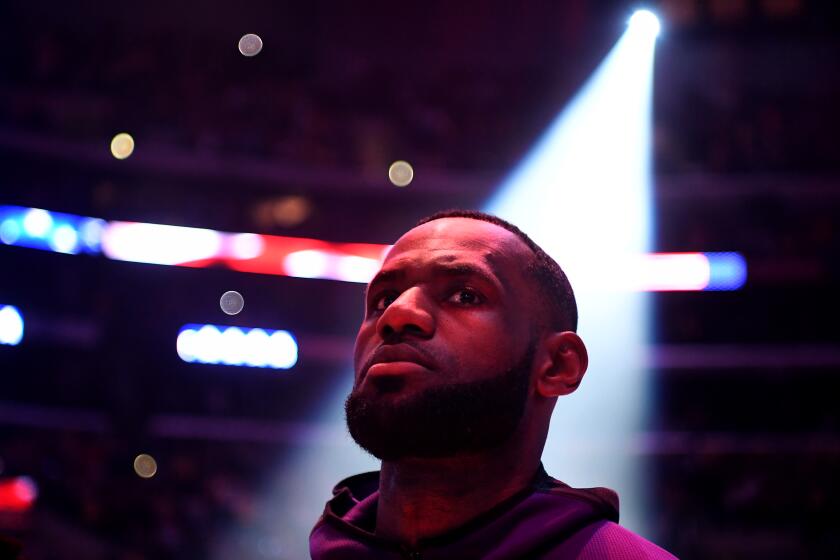Breaking it down
- Share via
Major League Baseball
Drug testing began: March 2003.
Biggest catches: Ryan Braun (65-game suspension), Manny Ramirez (50 games), Melky Cabrera (50 games), Rafael Palmeiro, Jason Grimsley. Plus more than 30 minor leaguers and free agents in 2012.
Drugs of choice: Testosterone (increases strength, speeds recovery after workouts); Adderall (attention-deficit stimulant).
Strengths: In 2012, did 5,136 random drug tests (3,955 urine, 1,181 blood tests) on players. Seven tested positive for performance-enhancing drugs, 11 for stimulants. MLB gets high marks for costly carbon isotope ratio (CIR) blood tests to pinpoint testosterone use; also uses “biological passport” testing to monitor an athlete’s test results over time. In addition to lab testing, MLB relies on a team of investigators to pursue possible drug violations -- Braun’s suspension followed the Biogenesis probe.
Weaknesses: It took the breaking of nearly every hallowed power-hitting record before MLB aggressively began testing players for performance-enhancing substances. With doping continuing, some argue testing should be expanded more in the off-season.
NBA
Drug testing began: 1983.
Biggest catches: Hedo Turkoglu (Orlando, 20-game suspension in 2013 for steroid metenolone); Brandon Rush (Golden State, five games, 2010); Rashard Lewis (Orlando, 10 games, 2010 for testosterone); Ricky Davis (Clippers, five games, 2008); Darius Miles (Boston, 10 games, 2008 for amphetamine-like phentermine).
Drugs of choice: EPO, which triggers the production of red blood cells and boosts stamina; testosterone for strength and workout/game recovery.
Strengths: Commissioner David Stern recently said he’d like to incorporate a blood-testing plan for HGH by the start of the coming season. New collective-bargaining agreement beefed up discipline for first-time drug offenders from five to 20 games, and subjects every player in the league to six random drug tests per season.
Weaknesses: Currently does only urine tests. No blood tests to track EPO or HGH, even though NBA players are subject to such tests when participating in the Olympics. No off-season testing; and no investigative arm to pursue outside leads on possible drug violations.
Track and field
Drug testing began: 1976 Olympics.
Biggest catches: Ben Johnson (1988 100-meter gold medal stripped), Marion Jones (multiple medals stripped), Dwain Chambers (British sprinter received lifetime ban from Olympics but got ban overturned).
Drug of choice: Synthetic testosterone and EPO, or erythropoietin, which improves endurance and clears the system quickly.
Strengths: High-profile Olympic sport screened by the “gold standard” World Anti-Doping Agency Code, which provides expanded banned substances list, independent testing, out-of-competition tests, investigative units working alongside law enforcement, and invests in research to root out new PEDs.
Weaknesses: Uneven off-season testing is left to each nation’s anti-doping agency. Jamaica has a gifted track team, but there were only 106 drug tests among athletes in all sports in the 2012 Olympic year; U.S. athletes took more than 4,000 tests.
NFL
Drug testing began: 1987.
Biggest catches: Shawne Merriman (San Diego Chargers linebacker); Brian Cushing (Houston Texans LB); Santonio Holmes (New York Jets wide receiver); Justin Blackmon (Jacksonville Jaguars WR); 35 players tested positive in 2012.
Drugs of choice: Synthetic testosterone; human growth hormone.
Strengths: The league conducted roughly 15,000 urine drug tests last season, including playoffs, and each player was tested at least once, according to the NFL. Each week, 10 players from a team are tested randomly, and they must provide a sample regardless of whether they were chosen for consecutive tests. The league is moving toward HGH, collecting blood samples in training camps to establish the threshold of a positive test.
Weaknesses: An anonymous NFC player told the Milwaukee Journal-Sentinel this year he believes 10 to 15 players per team use HGH. The league has yet to introduce the more sophisticated CIR testing.
Boxing/MMA
Drug testing began: Boxing: 1983 (Nevada State Athletic Commission); MMA: 2001.
Biggest catches: Boxers: Fernando Vargas (steroids, 2002), James Toney (steroids, 2005, 2007), Lamont Peterson (synthetic testosterone, 2012); UFC heavyweight Alistair Overeem (elevated testosterone, 2012).
Drugs of choice: Testosterone, EPO.
Strengths: Some boxers, including welterweight champion Timothy Bradley and former champion Nonito Donaire, sought to supplement state athletic-commission testing with that done by the independent Voluntary Anti-Doping Assn., which does multiple random drug tests and employs CIR testing to spot synthetic testosterone. Floyd Mayweather Jr. requires that he and his opponents pass U.S. Anti-Doping Agency tests.
Weaknesses: Drug testing can be virtually nonexistent in the sport’s biggest fights. In the Manny Pacquiao-Juan Manuel Marquez bout last December, Nevada’s athletic commission conducted only pre- and post-fight urine tests.
NCAA (major sports)
Drug testing began: 1986.
Biggest catches: Medical privacy laws forbid NCAA from releasing names; 45 football players failed drug tests among nearly 5,000 tests in 2011-12; and eight of 1,750 baseball athletes tested positive.
Drugs of choice: EPO, testosterone.
Strengths: The discipline of getting caught is severe -- one year of lost eligibility. New chief medical officer and a push for extra funding of testing plan could lead to improvements.
Weaknesses: Despite millions in revenue from football and basketball, NCAA conducts only urine tests; no CIR testing, and does not test athletes in the off-season.
NHL
Drug testing began: 2005.
Biggest catches: Sean Hill (N.Y. Islanders, 2007), Jose Theodore (Florida, 2005), Bryan Berard (Columbus, 2005).
Drugs of choice: Stimulants, EPO.
Strengths: Elite players who participate in the Olympics are subject to stricter WADA-standardized testing before and during the Winter Games.
Weaknesses: NHL lags behind other major team sports in pursuit of HGH testing. No blood testing, only urine tests. New CBA allows players’ test samples to be destroyed rather than subject them to future testing for emerging drugs/stimulants. Until the 2012-13 season, there was no drug testing during the playoffs or in the off-season.
Cycling
Drug testing began: 1966 (Tour de France).
Biggest catches: Lance Armstrong (seven Tour de France titles stripped in 2012 after USADA investigation; Floyd Landis
(stripped of 2006 Tour title); Alberto Contador (2010 Tour winner stripped after positive test for banned weight-loss substance clenbuterol).
Drugs of choice: EPO, testosterone.
Strengths: Stripping of several Tour titles, following intense anti-doping involvement, forced the sport to confront its drug problems.
Weaknesses: Despite anti-doping officials’ efforts, governing body the International Cycling Union was slow to root out drug use by the sports’ biggest names, leaving cycling’s reputation stained.
-- Lance Pugmire
--
Twitter: @latimespugmire
More to Read
Go beyond the scoreboard
Get the latest on L.A.'s teams in the daily Sports Report newsletter.
You may occasionally receive promotional content from the Los Angeles Times.











